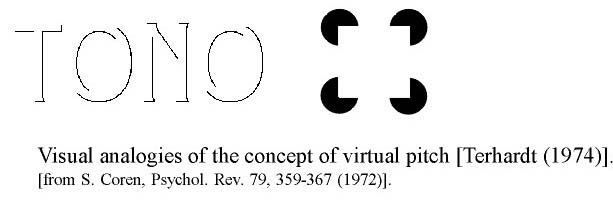2. The harmonics of a sound as the basis of musical perception
2.1 Significant harmonics for the
human auditory system
If we play C2 on the piano (corresponding to a frequency of 131 Hz), the acoustic spectrum is approximately as follows:
Fig. 11

The vertical lines on the graph show the intensity of each of the harmonics of the note played.1 This sound structure, a combination of simultaneous sounds with the same basic timbre (sinusoidal waves) but of differing intensity, enters the cochlea and excites a number of hair cells, each of which is sensitive to certain different frequencies. These frequencies travel along nervous fibres to the auditive cortex of the brain. This is where we identify the combination of sounds in figure 11 as "one" note on the "piano". That is, each sound is the sum of a collection of sounds of elemental timbre. This elemental timbre is always the same for all sounds; is the sound corresponding to a sinusoidal wave. 2
Although we have a collection of frequencies, the brain summarizes them all in one (which has the greatest common divisor) and is a frequency that may not exist in the collection of sinusoidal frequencies we have (!) (later on we will see the importance of this when we study the virtual fundamental). The information we
1 H.F.Olson (1967). This spectrum changes with time, from the moment the key is pressed until silence returns.
2 According to the Fourier's theorem, any periodic wave (sound is a periodic wave) can be decomposed as the sum of sinusoidal waves.










